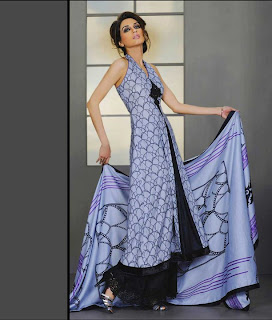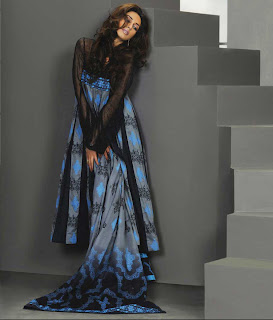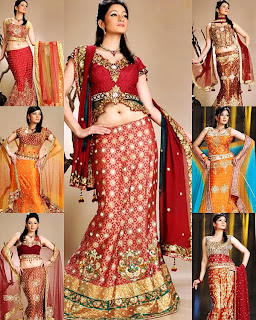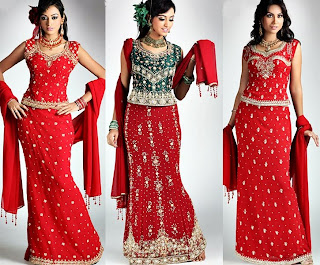Introduction:
Most unwanted hair color disasters are often due to the lack of understanding about the basic hair coloring "laws" and how they apply to coloring hair.
This article (which is a classic and the very first of its kind on the Web since 2000) is not meant to be a thorough education in hair coloring, but a first step in helping home users of hair color to understand the basics.
I will try not to get too technical, so follow along carefully and re-read any area that you are not sure about until you understand it thoroughly.
Warning: This information is presented for your own judgment of suitability and use at the user's risk. No liability is assumed whatsoever by the author of this article or by HairBoutique.com.
First Rule Of Color - Hair Color Is Not Hair Paint:
Color, as we perceive it, is actually the reflection of light off of the colored pigments in the hair shaft. This "reflection of light" is what we see as "color".
The shade of color is made up of the different combinations of reflections of light off of the colored pigments.
This is why hair color appears different under fluorescent lights than in natural sunlight - whether it is color from nature or from a bottle.
Levels: What They Are And How They Impact Hair Color
Levels are the degree of "lightness or darkness" of a color that is "reflected or seen" by the eye. Hair color is assigned a Level 'number' from1 to 10 with 1 being black and 10 lightest blonde.
In other words, black reflects very little light and lightest blonde reflects the greatest amount of light. A level 10 blonde would be 'two steps lighter' than a level 8 blonde. This system of levels applies to all colors and almost all brands commonly found.
Different Types of Hair Color:
There are several different types of hair color. Be sure to read this section carefully.
Permanent Haircolor:
Permanent is just what it means. This makes a 'permanent' change in the pigment of the hair shaft. It does not wash out!
It will fade in time, but cannot be simply removed to "bring back" your natural color. All hair that has been colored in this way has the natural color pigments irreversibly chemically altered.
It can be removed, leaving the "altered" hair shaft pigments, which can be "corrective colored" back close to the original color.
This is a job which should be left to the Pros Only! It can be one visit or many visits to the salon to try to correct a bad color job, it is expensive and is hard on the hair to varying degrees.
Single Process Color:
Single Process Color Is The Only Permanent Color That Should Be Attempted By The Amateur!Single process means that the color is lifted and deposited in one step.
Semi-Permanent:
Semi-Permanent color is what it says it is, it can cover gray and go darker, but can not lighten. It lasts varying lengths of time depending on the product. Suitable for amateur colorists.
Warning: Double Process (bleaching and toning to the desired color) should never be attempted by a home hair colorist!. This is definitely a pro-only process.
Deposit Only Color:
Deposit Only color can only "deposit" color into the hair, there are many varieties on the market for the home user. These are very "User Friendly'' and usually condition and color in one step.
The very popular color "glazes or translucent" colors are among the easiest to start with to enhance your color. Most use a very low 3% peroxide to activate them . Some are capable of lifting or lightening one level. Professionally, Redken SHADES EQ is my favorite, bar none!
Second Rule Of Color - Do Your Homework Before You Color:
What does this mean? It means that you must be perfectly honest to yourself and about yourself and the factors that enter into hair coloring. If you are very dark haired (Level 1) and want to be a level 10 platinum blonde, forget home hair coloring!
Step #1: Select The Designed Color That You Want:
First you must select the desired color that you want to be, say an medium warm blonde level 8.
Now that you have determined where you want to be color wise, you have to find out where you are now. By "now" I mean first the 'level' (there's that level word again) and the tone of your hair, whether it has reddish or blonde undertones considered "warm" colors or ashen "cool" undertones.
Lets say that you are a light ash brown level 6. Being a level 6 "ash" light brown means that you have an "absence of 'warm' undertones" in your hair now; but; you want to both "lighten and warm up"' the color to the desired level of an 8 warm blonde color.
Doing The Math For Haircoloring:
Don't panic when I say reddish or blonde undertones. Remember, I said that the color you "see" is a combination of colors reflecting off of the hair. Now you must do the math part of the 'homework'.
You must use a swatch book or ring to compare your hair color as it is now to match levels and tones in natural light if at all possible. Not what you perceive, or think, or what your Aunt Flo called your color when you were a kid!!
Now that you know where you are now and where you are going, let's look at the following example of how to get there!
Desired color-Warm Blonde Level = Level 8
Target color level X 2 = 16
Natural color-Light Ash Brown = Level 6
subtract this from target color level of 16 16-6=10
This gives you the number of levels to lift (= 2) and the level of color to use (=10).
Note: If the total number for the level of color is 13 or larger, pre-lightening is required to achieve the desired color. You need to go off to a professional for double process coloring.
How Hair Is Lightened:
Since it has been established that the 'new' color is a combination of your old color level and tone (referred to as our 'base' color) and the new color that is deposited into the hair, you must take into account what happens when you lighten or lift the base color to another level and deposit the new pigments into the hair shaft.
When hair is lightened it goes through several stages of lightening from the darkest to the lightest from a base of blue in the case of natural black to pale blonde with the palest of yellow as its base color.
This lightening process fractures the color pigment creating undertones that are unwanted.
Always Do A Strand Test:
A strand test is the only reliable way to "preview" the new color. At this time adjustments can be made to the hair color formula to either add or subtract colors to enhance or cancel different undertones in the test strands.
Do not be afraid of doing more than one test strand before doing overall color and always do it on uncolored hair.
The length of time that the color mixture is left on can also be varied to change results. Always thoroughly dry the test strand to check for proper color and breakage/damage.
Warning: Do not attempt to color hair that has had henna or metallic dyes used on it
Tips Before Coloring:
Before coloring it is best to practice parting off thin parts of hair 1/4 to 1/2 inch in width depending on the density of the hair. Apply conditioner to your hair a few days before doing the actual coloring to get the hang of handling a hair color applicator bottle.
In the case of thick long hair, get a friend to help. A clarifying treatment to remove buildup in the hair should always be done before coloring. Always follow the manufacturer's instructions.
On long hair, the ends are always more porous than the rest. Apply color to the mid lengths from about 1 inch from the scalp and then the ends.
Follow this procedure because the scalp will process faster due to the heat of the body and the insulating effect of long hair on the scalp. Here there is no help like experience.
Even just doing the test strands or working on your friends will teach an amateur colorist a lot.....if you will be observant and patient.
Very thick, long hair, may have to be colored in sections, rinsed and the uncolored hair dried to allow color to be applied to the rest.
Be sure not to re-color already colored hair and observe timing exactly.












